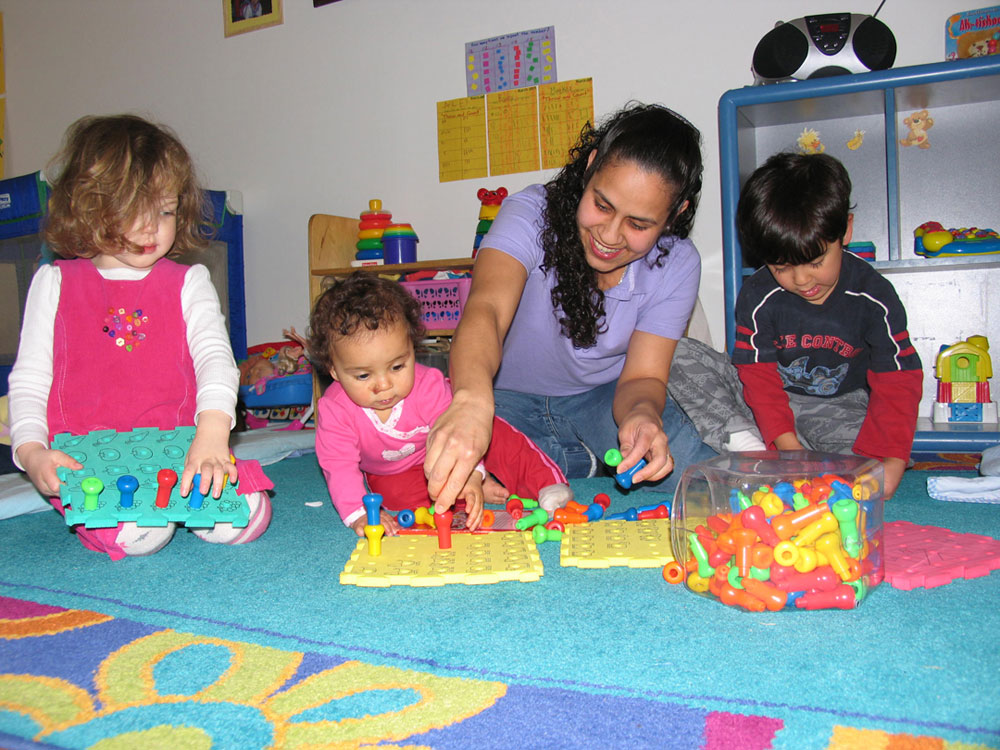
April 17, 2020; Caller-Times (Corpus Christi, TX), City Lab, and the Hechinger Report
In a country where most parents must work, childcare is not optional. As with other parts of our economy, COVID-19 has disrupted the network of organizations—public and private, for-profit and nonprofit—that together made up a haphazard national childcare system, unguided by any coherent set of national policies, and exposed its deep flaws. Nationally, notes Lillian Mongeau for the Hechinger Report, there are 1.7 million childcare providers. Whether that system can survive is now uncertain.
Childcare is often associated with children too young to enter the public-school system. Here, the need is met by preschools, childcare centers, and in-home care givers. Some rely on government funding, but many depend entirely on fee-for-service revenues. With millions out of work, the weaknesses in the system have been exposed. Evans Allvin, speaking to the Hechinger Report on behalf of the National Association for the Education of Young Children, says, “The industry is built on the middle class, who are full paying.”
As states marshal their resources to respond to COVID-19, they have recognized that essential workers must have childcare. Texas officials, according to the Corpus Christi Caller-Times, “have sprung into action, recognizing that childcare is critical for getting medical professionals and other essential employees to work during this crisis—and recognizing that once the pandemic is over, our economy will recover only if a strong child care infrastructure is in place.”
Leveraging federal funding and its rule-making authority, the Texas Workforce Commission (TWC) also provided short-term support for childcare programs serving low-income families and children in foster care.
Those providing care in poor and working-class neighborhoods are particularly important, as they help keep households living paycheck-to-paycheck afloat. Gladys Jones, who operates a small family day care program in New York City, tells City Lab that “their small size and flexibility about hours makes these programs particularly well-positioned to help with this crisis. Many already care for the children of first responders and essential service workers such as hospital staff, janitors, and grocers. Several offer night care.”
Sign up for our free newsletters
Subscribe to NPQ's newsletters to have our top stories delivered directly to your inbox.
By signing up, you agree to our privacy policy and terms of use, and to receive messages from NPQ and our partners.
For many childcare providers, the level of help currently offered will not be enough to sustain them through the crisis. “Despite a swelling share of parents who must continue working but suddenly have no support,” City Lab recently observed, “many childcare programs have found themselves severely under-enrolled and some have begun closing as a result.”
Data from the National Association for the Education of Young Children (NAEYC) and the Early Care & Education Consortium (ECEC) suggests that programs around the country lost nearly 70 percent of their daily attendance in one week during the pandemic, with many saying they could not last a week without getting paid. Providers are reporting on social media that families are keeping their kids’ home because parents are losing jobs, working from home, or simply out of fear.
ECEC Executive Director Radha Mohan sees the threat to the sector as severe.
We estimate that without immediate financial support thousands of childcare centers and family childcare homes will be unable to cover their fixed costs within the next month. Providers need…emergency assistance in order to do things like pay occupancy costs, maintain payroll and benefits, and pay incentive pay to those educators and support staff willing to continue to work to care for the children of essential personnel for the duration of this crisis.
COVID-19 also demonstrates that childcare doesn’t just benefit the very young. As soon as COVID-19 forced schools to close, the parents of 22 million children needed to replace the unseen but important role of their public schools in providing a safe and supportive environment that allowed them to do their jobs. Some school systems, recognizing this, extended their days to care for their students before and after formal school hours. In other locations, a network of providers, like those providing care for preschoolers, have stepped in to fill the gap.
COVID-19 teaches us that childcare and our economy walk in step. Meghan Tavormina, president of NAEYC’s New Jersey chapter, raises a challenge that must be part of the discussion: “We’ve been really trying to scream that [the childcare industry] can’t survive the way it is, and it needs public funding, and now we’re at this point that it’s coming to a head. Imagine trying to get the entire workforce back to work without childcare.”—Martin Levine













